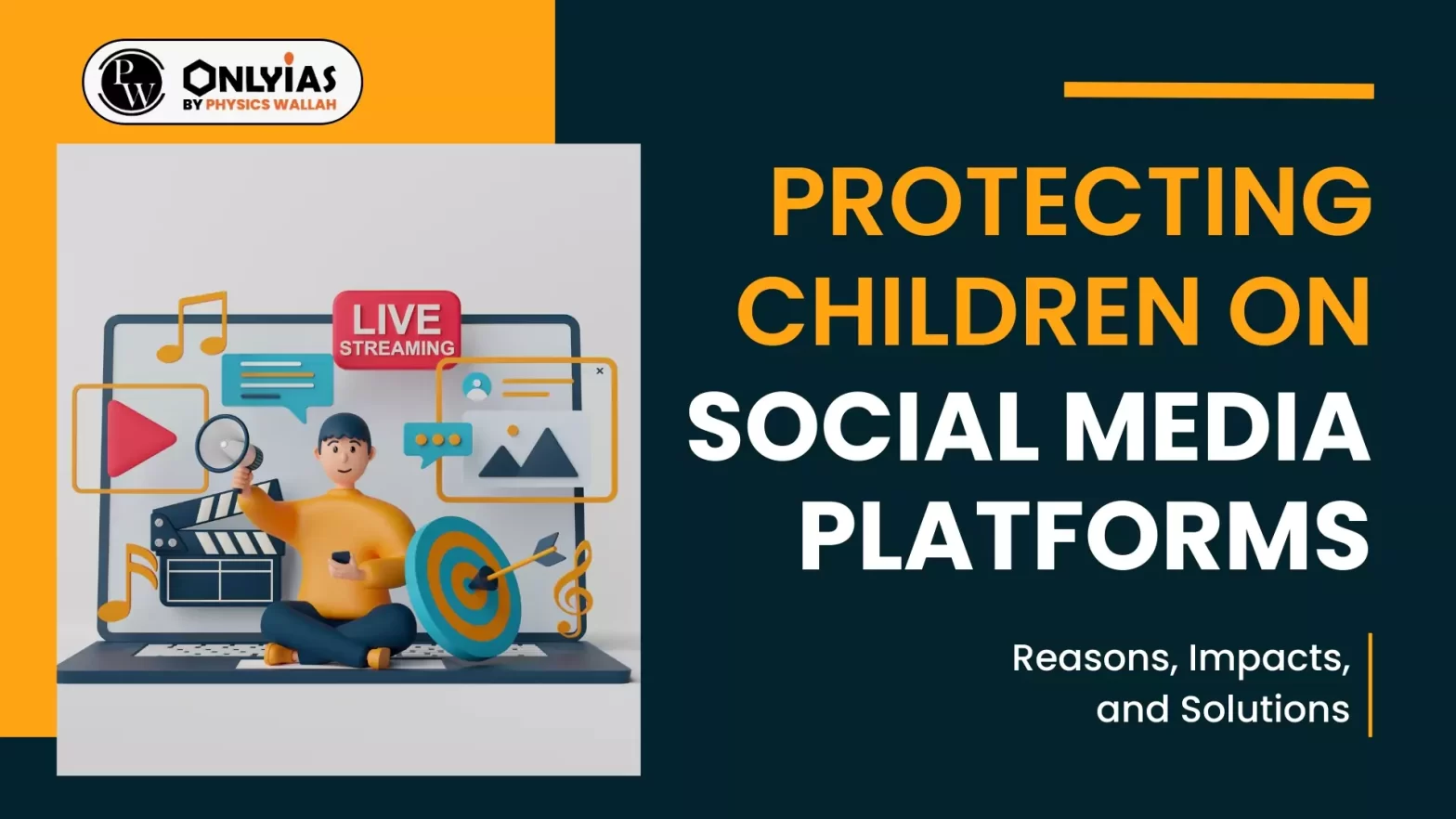![]() 30 Mar 2024
30 Mar 2024

Recently, Florida in USA, passed a law that prohibits people under 14 years old from having social media accounts, regardless of parental consent.
| Relevancy for Prelims: Social Media, Impacts Of Social Media On Children, Regulation Of Social Media For Children, Regulation Code For OTT Platforms In India, Growing Cyber Crimes In India, and National Commission For Protection Of Child Rights.
Relevancy for Mains: Regulation of Social Media For Children: Need, Significance, and Impacts. |
|---|
| Prelims PYQ (2020):
In India, under cyber insurance for individuals, which of the following benefits are generally covered, in addition to payment for the funds and other benefits? 1. Cost of restoration of the computer system in case of malware disrupting access to one’s computer 2. Cost of a new computer if some miscreant wilfully damages it, if proved so 3. Cost of hiring a specialized consultant to minimize the loss in case of cyber extortion. 4. Cost of defence in the Court of Law if any third party files a suit Select the correct answer using the code given below: (a) 1, 2 and 4 only (b) 1, 3 and 4 only (c) 2 and 3 only (d) 1, 2, 3 and 4 Ans: (b) |
|---|
| Mains Question: Explain the effectiveness of the POCSO Act in addressing child sexual abuse, considering its challenges. (10 M, 150 Words) |
|---|
| Must Read | |
| NCERT Notes For UPSC | UPSC Daily Current Affairs |
| UPSC Blogs | UPSC Daily Editorials |
| Daily Current Affairs Quiz | Daily Main Answer Writing |
| UPSC Mains Previous Year Papers | UPSC Test Series 2024 |

<div class="new-fform">
</div>